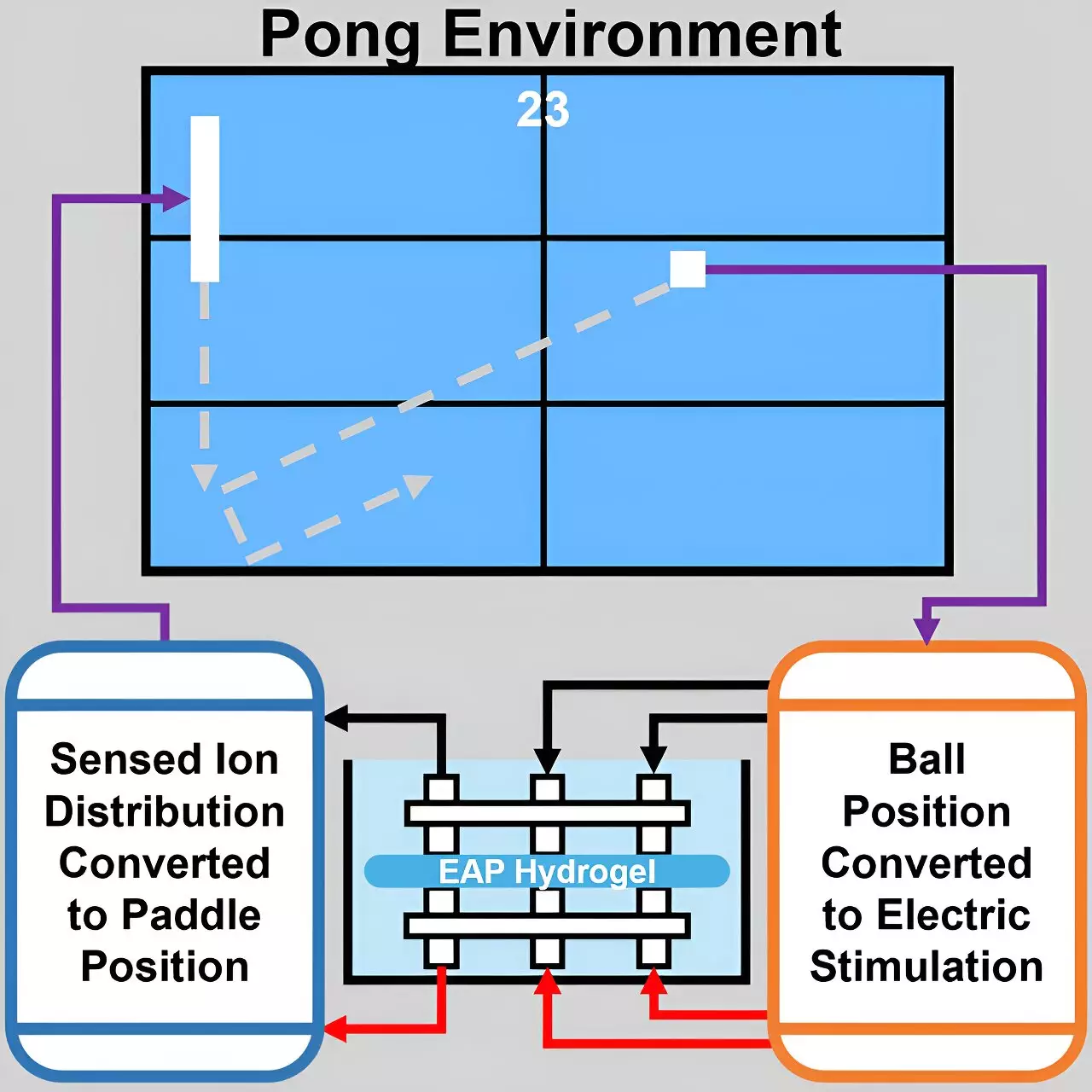Recent advancements in material science have unveiled a fascinating phenomenon in the field of artificial intelligence: a simple hydrogel has exhibited the ability to learn and adapt in ways reminiscent of living organisms and complex neural networks. A study published on August 22, 2023, in *Cell Reports Physical Science*, led by Dr. Yoshikatsu Hayashi from the University of Reading, illuminated this groundbreaking discovery. Unlike traditional AI models, which are often based on intricate neural networks, this hydrogel demonstrates that even straightforward materials can exhibit complex behaviors, implying a shift in how we perceive intelligence and learning.
Playing Pong: A Game of Learning
The hydrogel’s remarkable journey began with its performance in the classic 1970s computer game “Pong.” By interfacing with a computer simulation through a multi-electrode array, the hydrogel showcased remarkable learning capabilities, improving its performance over time. Dr. Hayashi remarked on the significance of this achievement, stating that it showcases the latent intelligence buried within simple materials. This evolutionary learning behavior stems from the movement of charged particles within the hydrogel that respond to electrical stimulation, effectively creating a rudimentary form of memory integral to its function.
Vincent Strong, a robotics engineer and first author of the study, emphasized the parallels between this hydrogel’s capabilities and those of more advanced neural networks. He noted that ionic hydrogels can mimic basic memory functions similar to those found in living brain cells. The ability to play and improve at Pong represents not just an engaging experiment; it suggests a new frontier in how we can design materials that mimic intelligent behavior.
Inspiration from Neurobiology
This innovative research drew inspiration from previous experiments where brain cells in culture were able to learn through electrical stimulation. Dr. Hayashi reflected on this connection, suggesting that learning in both living systems and artificial constructs, such as hydrogels, might share fundamental processing mechanisms. The analogies drawn between ionic activity in neurons and hydrogels highlight a significant cross-disciplinary interest—examining how adaptive capabilities can emerge from comparatively simple systems.
The research team’s exploration dives deeper into the question: can basic materials replicate the feedback loops essential for sophisticated processing? By establishing this link, they open a dialogue about the broader implications surrounding the roles of different systems in learning and adaptation.
The study’s implications extend beyond learning hydrogels; it has potential applications in understanding complex biological phenomena like heart function. In collaborative research published in the *Proceedings of the National Academy of Sciences*, Dr. Hayashi’s team demonstrated that a different hydrogel could rhythmically synchronize with an external pacemaker, a feat previously attributed only to living cells. This research emphasizes how designed materials can bridge the gap between mechanical and chemical processes, vital for replicating the functions of heart tissues.
Dr. Tunde Geher-Herczegh, lead author of this complementary study, highlighted that findings from their hydrogel research could pave the way for innovative solutions in cardiac care—specifically for conditions such as arrhythmia, which afflict millions. This could revolutionize diagnostics and treatments, leveraging materials that function similarly to biological tissues without utilizing animal subjects.
The research led by Dr. Hayashi and his colleagues signifies a promising shift in the intersectionality of fields like neuroscience, materials science, and cardiac research. The findings suggest that the principles underlying learning and adaptability are not just confined to biological systems but might also be universal, applicable across different domains.
Future investigations are focused on probing deeper into the memory functions of hydrogels, with the goal of realizing more intricate behaviors that could be harnessed in practical applications. This could include the development of smarter materials that adapt to environmental changes, as well as alternative lab models that reduce reliance on animals for medical research.
The exploration of learning behaviors in hydrogels opens a floodgate of possibilities for various scientific fields. The ability of simple materials to acquire and demonstrate intelligence reshapes our understanding of cognition and learning. As we delve deeper into these findings, we may not only refine our current technologies but also chart a new course for innovations that bridge the gap between artificial and biological systems. As research progresses, the prospect of “smart” materials reshaping sectors as diverse as soft robotics, adaptive materials, and cardiac care becomes increasingly tangible, heralding a new era of material science that blurs the lines between life and artificiality.


Leave a Reply